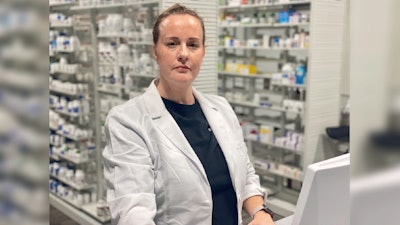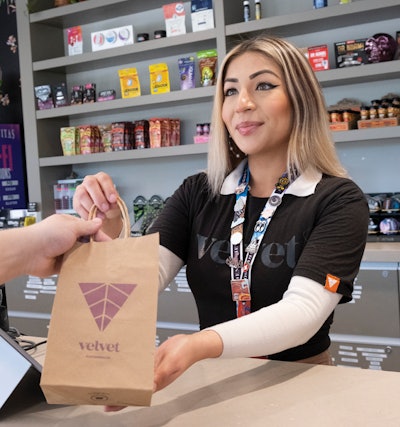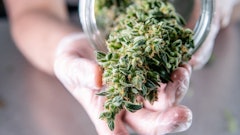
In a cannabis industry fragmented by individual state markets and differing regulations, uniformity is often one of the most difficult goals for retailers to attain
While each cannabis market has its own products, rules, regulations and practices, and each dispensary operates uniquely, it’s essential that retail managers and employees provide consistent, beneficial interactions and services for cannabis consumers and patients, according to Colleen Higgins, R.Ph, owner of Dispensary Teams, a web-based provider of training programs for medical and adult-use dispensary employees.
“We are in a service industry,” says Higgins, who has visited dispensaries in California, Colorado, Connecticut, Maine, Massachusetts and Nevada. “The service industry is not so easy to be in. … So you want to make sure that you're prepared to serve your clients that walk in the door and take care of them and keep them coming back and building that business.”
Here, Higgins shares tips on how dispensaries can best prepare their employees for positive interactions with cannabis consumers.
1. Base starting dose recommendations on consumer tolerance.
When it comes to cannabis products and edibles, specifically, knowing a consumer’s tolerance or experience level is essential to helping them find the product that works best for them.
Higgins says the first question she asks consumers when they walk into the dispensary is a simple, but often forgotten, one: What’s your tolerance level?
“All budtenders should know the starting dose of a THC edible, and it should not be 10 milligrams for a patient that's new to cannabis,” Higgins says. “If somebody uses cannabis every day, 10 milligrams is completely appropriate. If somebody uses cannabis three or four times a week, 10 milligrams is probably very appropriate. If somebody is coming into your dispensary because they're vacationing there and they've never used cannabis before, 10 milligrams is not appropriate. A five milligram dose is best for these patients. They are to wait two hours before re-medicating—not 30 minutes and thinking, ‘It's not kicking in yet.’”
Higgins says this slow and steady approach to dosing will help ease new consumers into the market without giving them a bad experience and completely turning them off to cannabis. She recommends CBD/THC blended products for new consumers, specifically.
“A 1:1 or a 2:1 CBD to THC [mix] is my favorite place to start for most people that are brand new to cannabis,” Higgins says.
2. Provide support to new consumers without overwhelming them.
When working with new consumers, Higgins says budtenders can have their conversations ready before the consumer walks into the dispensary.
“We first talk about the easy stuff. ‘OK, this is how we do purchasing here, this is how we do ordering in this dispensary.’ You start light,” Higgins says. “They're going to get a lot of information on that first or second visit, so send them home with supportive paperwork. That always helps. And then after that, know how you're going to explain cannabis and what's going on in the dispensary to somebody that's never used it before.”
Higgins says the goal of the first or second consultation should be to educate the consumer, but not overwhelm.
“The real good budtenders are the ones that can talk to a new patient or somebody that hasn't used cannabis a lot and they can introduce that to them without overwhelming them,” Higgins says. “They should have an idea of how to approach a new patient before that patient gets there, and they can deliver the information concisely so the patient can digest it and feel like, ‘Oh, OK, I got some value while I was here.’”
3. Educate consumers on the different delivery systems.
Higgins says a great place to start with cannabis education is explaining the different delivery systems—be it flower, vape, edible, tincture or other—and the pros and cons of each.
“We want to get the proper delivery system with the proper dose,” Higgins says.
Higgins says it’s essential to explain the differences between immediate onset products, such as flower and prerolls, as opposed to a gradual onset. Therefore, budtenders should first determine if the patient needs immediate relief or if they can wait a bit. Doing this helps provide consumers with “a much better journey.”
“So if you have somebody new coming in and they want an edible, great, no problem. It's going to take an hour to start working, but it'll last longer,” she says. “Or if you want to grab a vape or a preroll, not [a] problem, [but] one puff.”
Higgins says that some consumers are hesitant to smoke cannabis and may prefer other delivery methods for cannabis consumption.
“I find a lot of people don't want to inhale, especially our older patients. They're just not interested in that delivery system,” she says. “So to have sublingual as an alternative, a lot of people don't even realize it. But I find people love it when they know the products.”

4. Train budtenders on specific products.
But before consumers can be educated on products, budtenders must first do their own homework on products available in their dispensary. While this might sound like basic advice, training dispensary employees on the ins and outs of all available products is less common than one might think.
However, Higgins says budtenders should have at least a general understanding of all products in the dispensary.
“They might not know the details of every one, but they have [to have] a general understanding of all,” she says.
One way to best train your employees on products is to partner with cultivators to educate budtenders on the specifics of their products.
“I have not met a grower/producer who doesn't like talking about their products,” Higgins says. “You can ask them to send a one page [description], like a white page. ‘Hey, can you give me some tips on your product? This isn't going to be for the public, this is for us to talk to patients about, so just give us some tips on it.’ And that way when each new product comes in, they'll be up to date on that product, which is always essential.”
Educating budtenders and employees on products not only builds confidence for the employee, but also leads to more beneficial interactions with consumers.
“When you focus on [employee education], then you supply the budtender with a tremendous amount of confidence because they know what they’re talking about now. They’ve got a little more swagger,” Higgins says. “And then you provided that integrity and that safety for the [consumer] … they know they’re going to start safely and comfortably.”
5. Value your employees.
And while dispensary employees and budtenders are tasked with providing educational, beneficial interactions with consumers, it’s the operator’s responsibility to build a business and culture that fosters employee education and growth.
“You want a good, engaged employee who's excited about the products, who wants to learn about things, who's dealing with an owner who values the employee,” Higgins says.
One way operators can show employees they value them is to actively invest in their training and education, rather than simply pit all responsibility on employees , she says.
She adds that cannabis operators would be wise to follow a few simple directives to clearly set workplace expectations while boosting efficiency and morale.
“They can be professional. They can treat it like a business and not just assume [employees] are available to work whenever they need them,” Higgins says. “Everybody is excited to start working in the cannabis industry, but it's a job. It is a J-O-B. So I expect my pay to come on time. I expect to have a clear understanding of my PTO. I expect to have a clear understanding of my sick time. I expect to be able to make it to my daughter's swim meets, [etc].”
When employees feel well taken care of, they more often than not reciprocate that feeling toward the consumers. Therefore, it’s on operators to show employees that they’re essential to the business’ success rather than just another name and number on a spreadsheet.
“So you want to make sure that you value those employees, you give them a schedule, the budtenders are trained on the products [and] they're engaged in your business,” Higgins adds. “If not, they'll eventually filter out [and] they'll stop coming to work.”






















